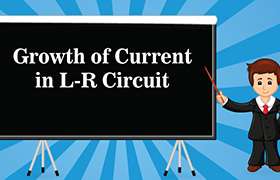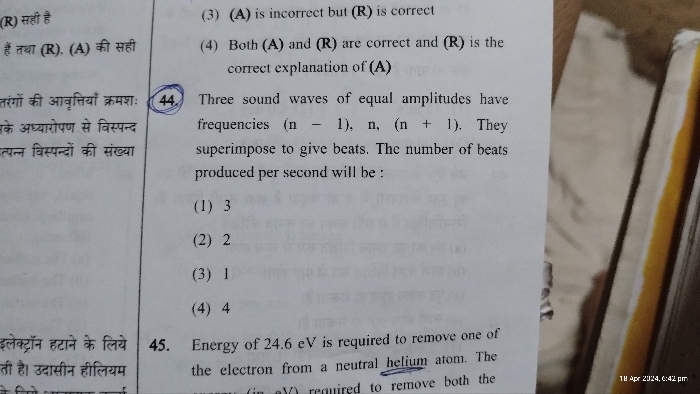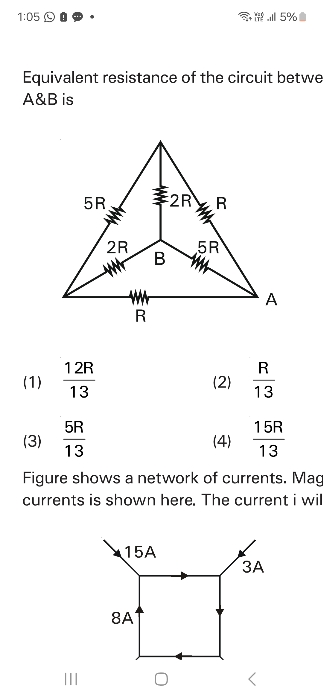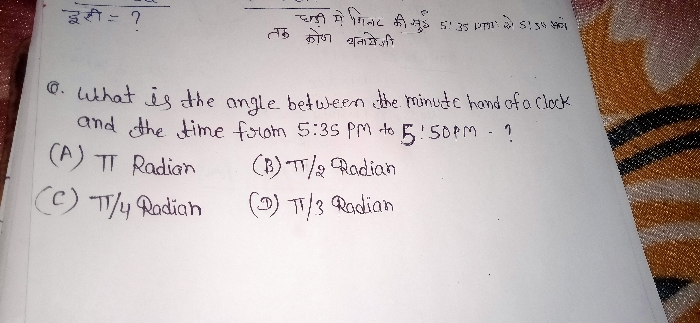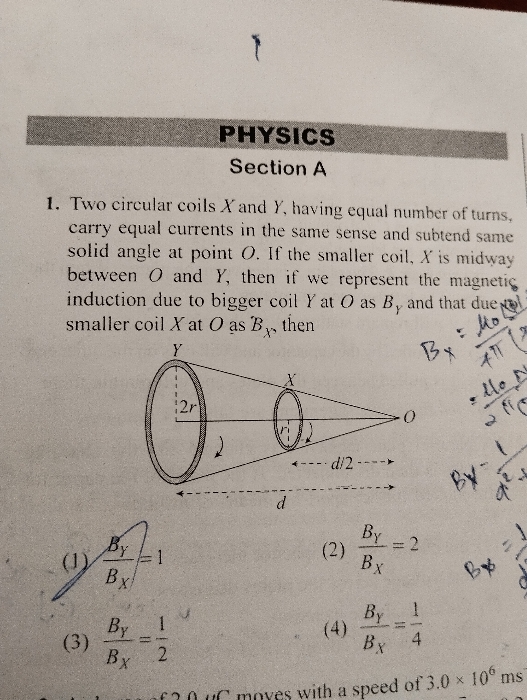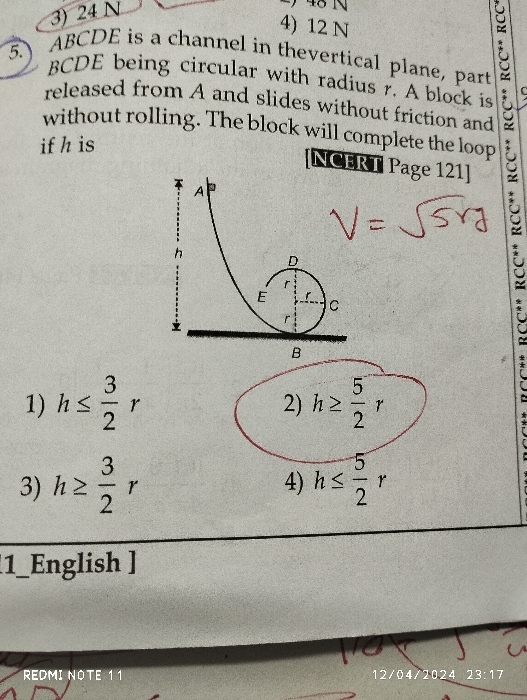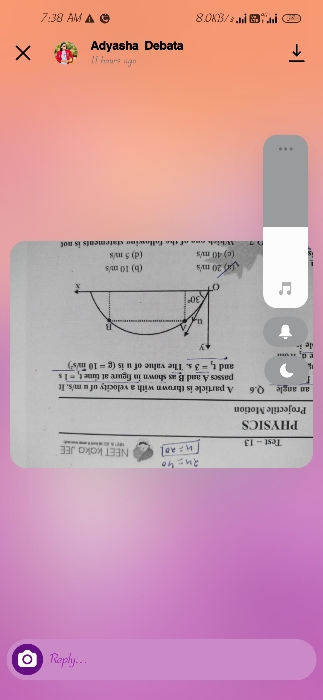NEET Class neet Answered
please answer this
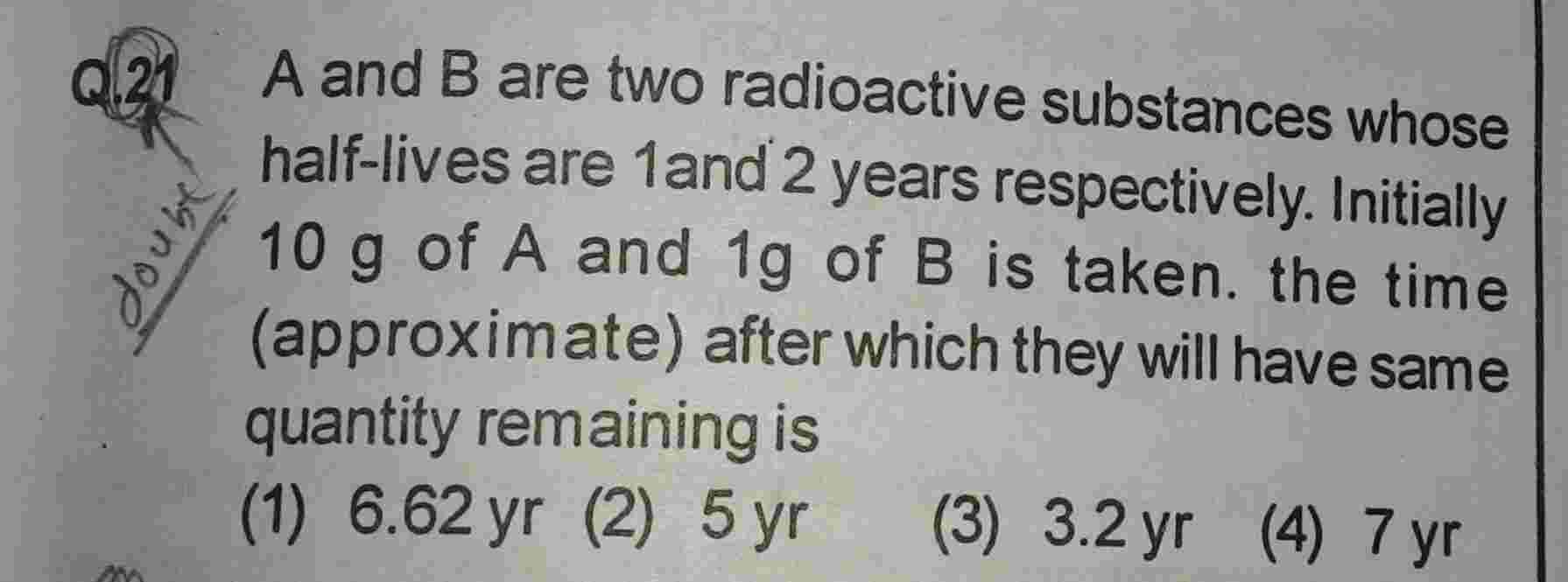
Asked by Prashant DIGHE | 14 Jan, 2020, 10:10: PM
If half life of sample-A is 1 year , its decay constant λA = ln2 (year)-1
If half life of sample-B is 1 year , its decay constant λA = ( ln2 )/2 = 0.5 × ln2 (year)-1
Let initially ytaken 10 g of sample-A and 1 g of sample-B has reached same activity after t years.
Then we have, 10 e-ln2 t = e-0.5 ln2 t
i.e., e.5 ln2 t = 10 or t = 2 × ( ln10 / ln 2 ) = 6.64 years
Answered by Thiyagarajan K | 15 Jan, 2020, 07:44: AM
Application Videos
NEET neet - Physics
Asked by praveenpriya000079 | 18 Apr, 2024, 07:24: AM
NEET neet - Physics
Asked by gouranshi84 | 17 Apr, 2024, 05:23: PM
NEET neet - Physics
Asked by sojusvi | 17 Apr, 2024, 01:12: PM

